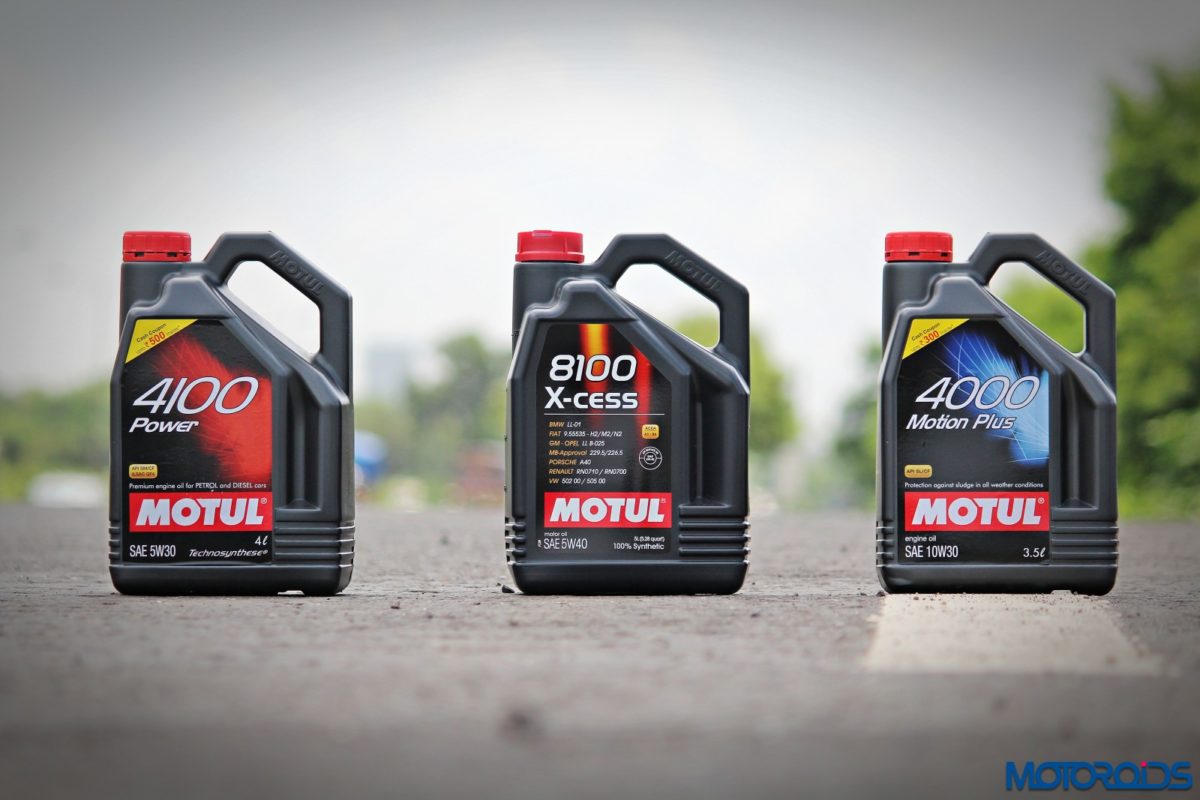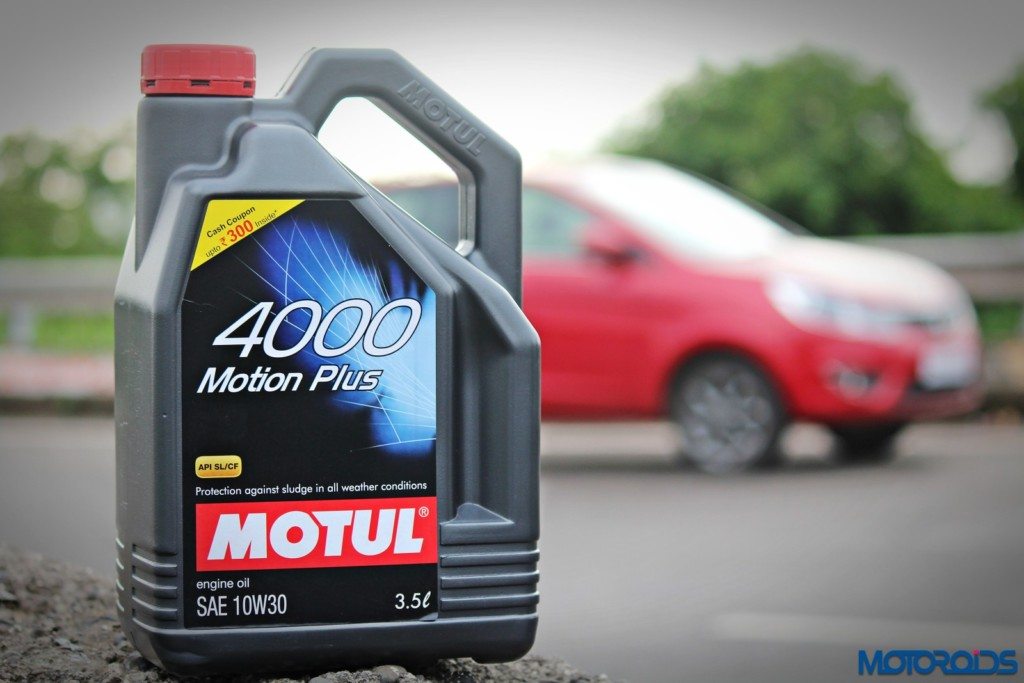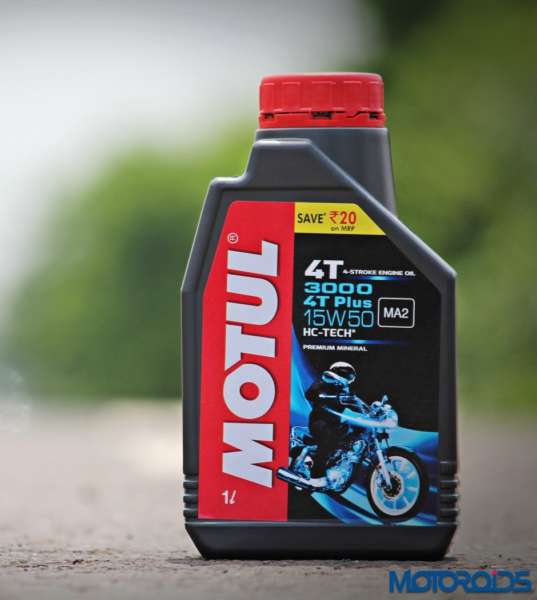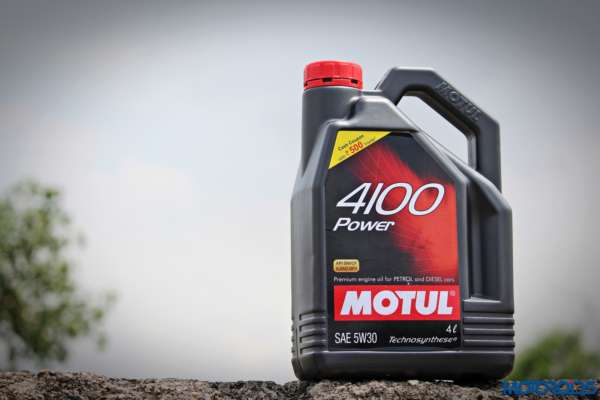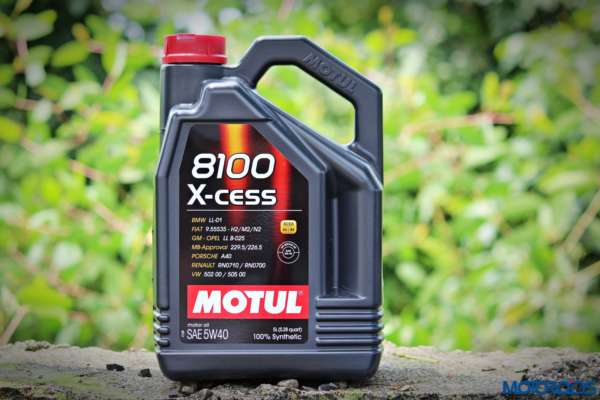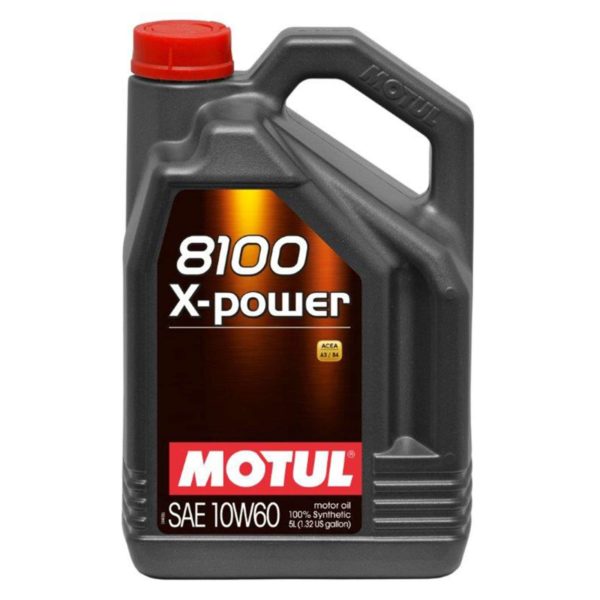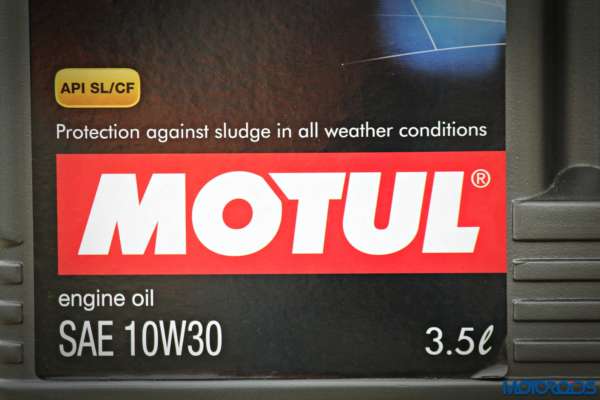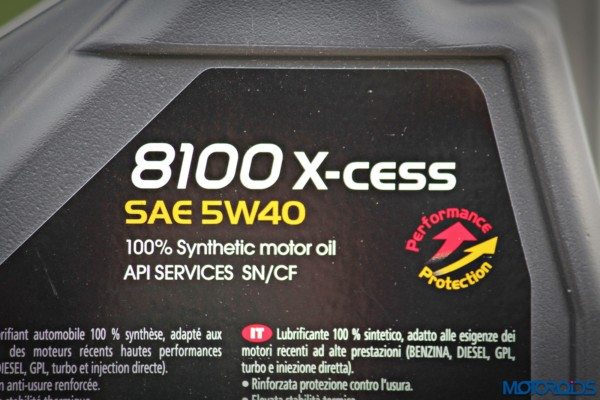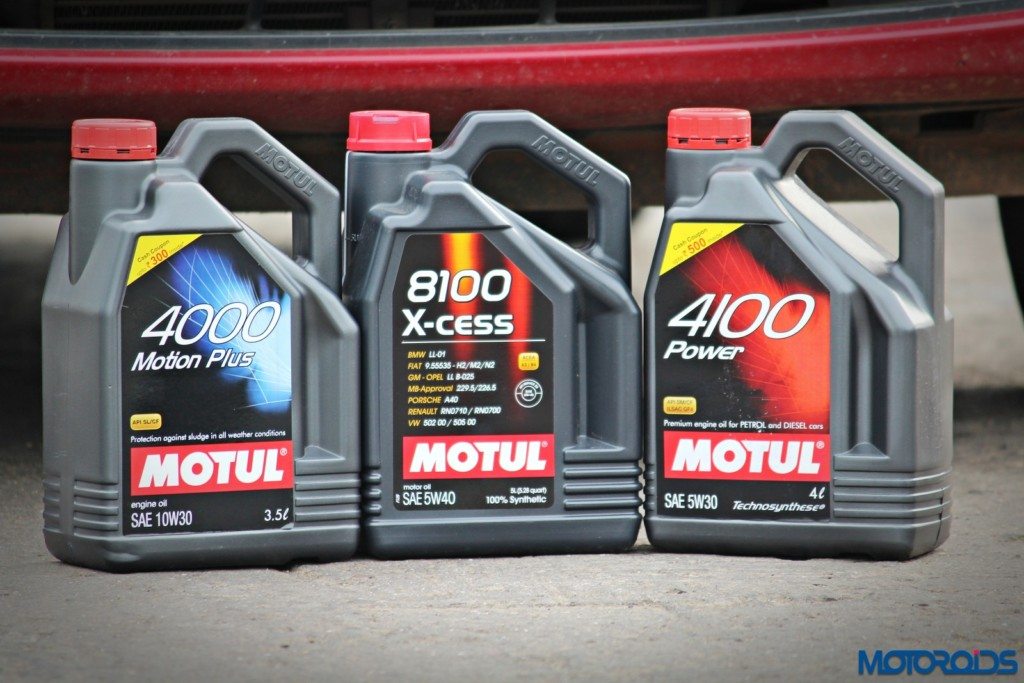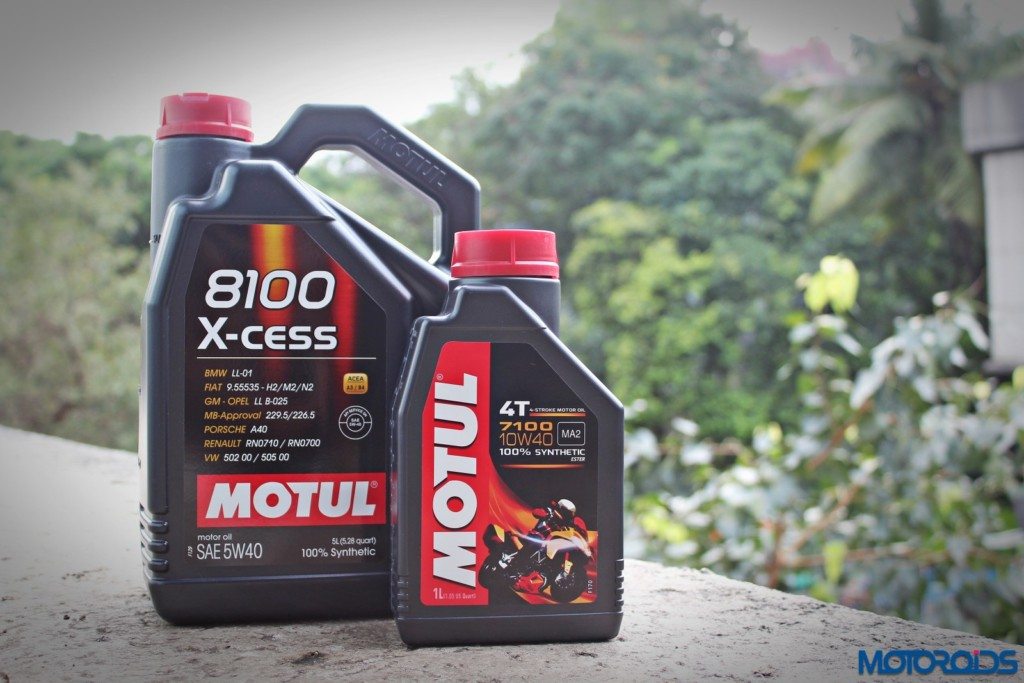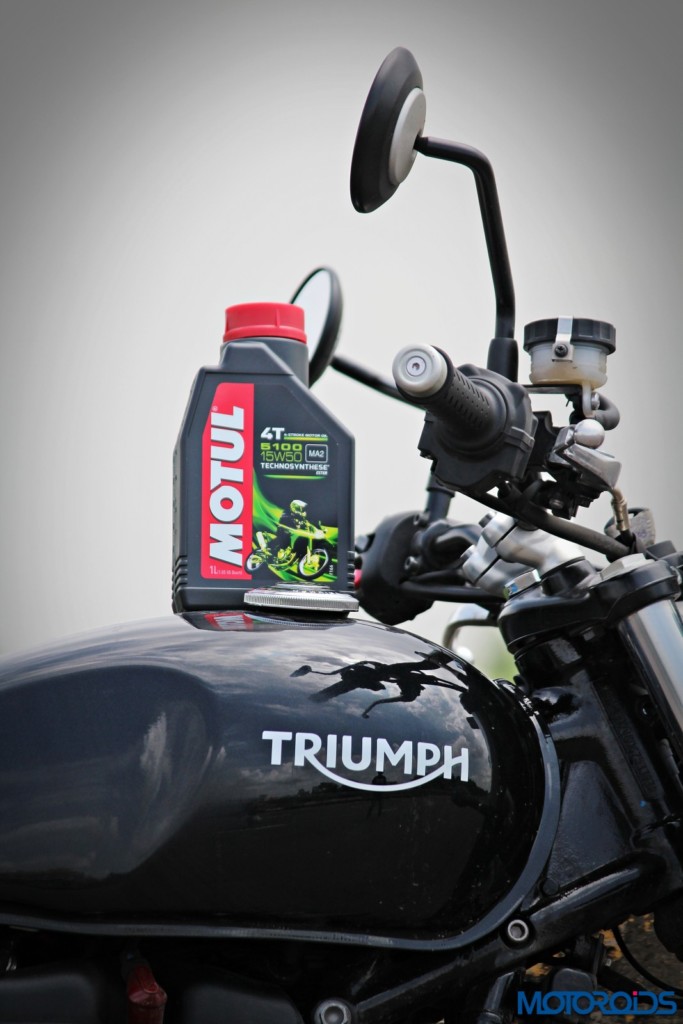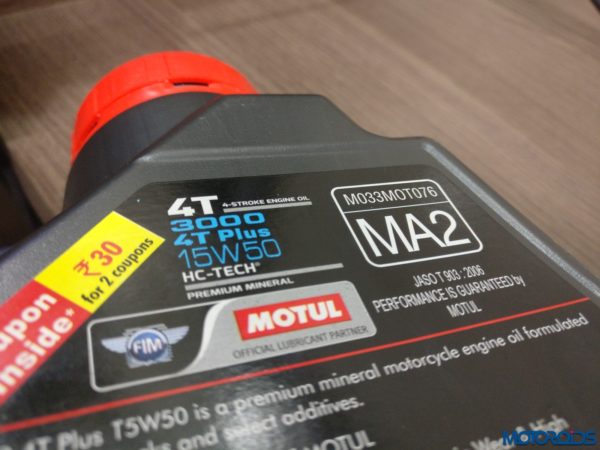Each one of us knows the importance of engine oil for the well-being of our beloved car / motorcycle. And yet, only a few of us understand this critical consumable the way we should. Those specification grades on oil cans, along with the ever present confusion of choosing between mineral and synthetic oils can become a little too much for everyday users sometimes. So in order to educate our readers about engine oils, we tied up with MOTUL, a globally renowned manufacturer of premium quality engine oils to create this web series covering everything you need to know about engine oils.
In the inaugural issue of this 12-part series we will cover the basics, and talk about the types of oils, their grades, additives used and the key differences between car and motorcycle oils. Let’s get going!
MOTUL FACT #1 : Motul was the first lubricant manufacturer to use ester technology for the formulation of its 100% synthetic car oils
Engine oil types
Engine oils are broadly classified into four major categories based on their synthesis and properties – conventional / mineral oils, semi-synthetic oils, fully synthetic oils and high mileage oils. Here’s what each variety of engine oil broadly signifies
1. Conventional / Mineral Oil
This is the most common variety of engine oils and most likely the variety you are using in your car or motorcycle. These are essentially refined petroleum oils which have been treated and formulated for specific requirements of a specific type of motor vehicles. These oils are available in a variety of grades at a price which is relatively economical. This one is the oil to go for if you drive a normal car or motorcycle in normal driving conditions.
2. Semi Synthetic Oil
Synthetic blend oil sees the conventional mineral oil getting mixed with a small portion of fully synthetic oil (explained in the next point) to enhance its viscosity at high temperatures. Semi synthetic oil can also exhibit enhanced performance in low temperatures. These blended synthetic oils essentially aim to offer performance which is closer to fully synthetic oils at a much more affordable price.
3. Synthetic Oil
Fully synthetic oils are manufactured through specialized processes which are more complicated and expensive. The chemically engineered processes involved with these oils ensure that these oils perform exceptionally well in extreme (cold or hot) conditions. These oils also exhibit a whole gamut of other superior properties too (lesser evaporation, low smudge formation etc). By virtue of their unique synthesis, the molecules of these oils are more uniform in shape, and also have fewer impurities. One important point to remember with synthetic oils is that while they deliver significantly better viscosity and shear resistance in extreme conditions, they don’t offer any significant advantages over their mineral counterparts in normal driving conditions.
4. High-Mileage Motor Oil
When your car’s engine grows old, having logged a very high mileage on the odometer, its oil seals and other sealants tend to give way. This leads to unwanted leakages and other complications. High mileage engine oils are meant specifically for such geriatric vehicles. The higher-mileage oils are formulated with additives, including seal conditioners that make the seals suppler and help increase their flexibility, reduce leakages and in turn help the engine run smoother and more efficiently.
MOTUL FACT # 2 : Even if you do not drive frequently, your vehicle’s engine oil can deteriorate owing to the moisture gathered
Engine Oil viscosity grade
So what exactly are those confusing numbers on engine oil cans, also quoted as the ‘specification’ by OEMs? Those puzzling alphanumeric codes are actually viscosity grades, and are often represented in a format which reads something like 10w30 or SAE40.
To understand that code, we first need to understand what viscosity means. Viscosity, for a layman is a fluid’s resistance to flow. For e.g. if you take a spoonful on milk and pour it on the floor, it would just flow away. On the other hand, if you did the same thing with honey, it would turn into a big globule, and flow at a much slower rate. In this case, the viscosity of honey is much higher than water.
A rating like 5W30 represents the viscosity of an oil at 0° F (-17.7 degree Celsius) and at 212° F (100 degree Celsius). The W between the two numbers represents winter, which means that the oil has been tested for low temperature performance as well.
So a 10W40 oil will have higher viscosity than a 10W30 oil at high temperature, which is a good thing as the viscosity of oil creates a film between the on the walls of the cylinder and piston and provides protection from wear.
On the other hand, at low temperature, the oil has to be resistant to thickening so it offers an easier cold start to your engine. So in theory, a 5W30 oil will offer better start-up to your engine than a 10W30 engine.
Another representation of viscosity you might come across is something like SAE40, which simply rates the engine oil’s viscosity for high temperature, and doesn’t talk about the viscosity at freezing temperatures.
The engine oils which have the rating for both low and high temperature viscosity are known as multi-grade oils, offering a better all-weather performance. While the other type, meant for use only in warm areas is called mono grade oil.
The capability to control the viscosity of engine oils for such a wide temperature range comes with the use of special additives to the base oil. But viscosity across temperatures isn’t the only thing that additives control, they can actually be used to control a whole bunch of other parameters, and we have explained all of them in the section below
MOTUL FACT #3 : If you change engine oil after really long intervals, it’s recommended that you use fully synthetic engine oils for your vehicle
Engine Oil additives
Engine oil isn’t just, well, oil. In order to lend it properties which make it completely suitable for use in a modern automobile engine, certain additives have to be mixed with it. The percentage of these additives may vary from 5% to 30% depending on the specific requirements of the application. Here’s a list of the various kinds of additives used with engine oils to enhance their capabilities.
- Detergent / dispersant additives – These additives help keep the engine clean by retarding the formation of deposits and sludge.
- Viscosity index improvers – These additives makes the oil offer consistent viscosity over a wider temperature range.
- Anti-wear agents – For the times when the lubricating film wears down (e.g. unused car for prolonged period), there have to be anti-wear agents to protect the metal surfaces. Oils are thus added with a minimal amount of zinc dialkyl dithio phosphate (ZDDP) to prevent wear in case of metal to metal contact. Certain other phosphorous and sulphur based anti-wear agents are also used in oils in some cases.
- Friction modifiers – These additives are used to reduce engine friction to enhance fuel efficiency. Commonly used compounds for the purpose include Graphite and molybdenum.
- Corrosion inhibitors & alkaline additives – These additives protect the engine from corrosion caused by exposure to water and acids which are released as by-products of combustion.
- Antioxidants – Reduce oxidation process, which can result in oil thickening and sludge formation.
MOTUL FACT #4 : Running your engine on old and dirty oil will increase fuel consumption and reduce engine life
Difference between car and bike engine oils
Unlike what one would like to think, there is a pronounced difference between car and motorcycle engine oils. To start with, most motorbikes run at a higher engine speed, putting the oil under much higher stress as the engine operates at a higher temperature. Motorcycle engines, thus need to have a much superior shear stability, or resistance to losing viscosity at higher temperatures.
But that’s just a part of the problem.
Another big problem is that motorcycle use the same oil for both engine and gearbox. In a passenger car, on the other hand, the transmission is lubricated by an ATF fluid. This fluid possesses special frictional properties required for transmission operation. Motorcycles don’t have a provision for two different fluids for two different functions, so the oil needs to have special properties. This requires motorcycle oils to be uniquely formulated with dedicated technology. Friction modifiers, which are used in car oils for better fuel-efficiency can lead to clutch slippage in motorcycles.
Thus, the engine oils for cars and motorcycles are different, and even if the ratings might look similar, one should only use engine oils specific to cars and motorcycles and not commit the mistake of interchanging the two varieties.
The difference in the two varieties of engine oils is also highlighted by JASO standard, which is exclusive to motorcycle oils, and doesn’t apply to car engine oils. What is that now, you might ask. Well, the characteristics and performances of lubricants are managed by region specific (some globally applicable too) organizations as API, ACEA, and SAE through specific norms. These bodies define technical requirements for an engine to qualify for a certain performance grade. Some of the most important organizations are listed below
- American Petroleum Institute (API)
- Society of Automotive Engineers (SAE)
- Independent Lubricant Manufacturer Association (ILMA)
- European Automobile Manufacturers Association (ACEA)
- Japanese Automotive Standards Organization (JASO)
- As you must have noticed, JASO is the Japan specific body here. However, knowing Japan’s deep rooted association with performance motorbikes, certain JASO standards are almost globally (including India) accepted to rate the performance grade of engine two-wheeler oils.
The Grading system for motorcycles was developed by JASO in 1998. As mentioned before, additives like friction modifiers used for cars aren’t good for motorcycle engines. The new grading system, thus, measured the engine oil’s resistance to clutch friction or slippage, among other things.
MOTUL FACT #5 : Shifting suddenly from a very high gear to a very low one, say from fourth to first may damage the engine’s piston rings
4-stroke motorcycle engine oils are broadly classified by JASO through the following ratings
- JASO MA – meant for single unit engines which don’t contain friction modifiers and where the clutch, gearbox and engine used the same oil.
- JASO MB – This is a relatively lower standard and meant for some motorcycle models which utilize separate oils for engine, clutch and gearbox.
- JASO-MA2 –Introduced in 2006, this higher standard classification means that the oil can be used in motorcycles with catalytic converters.
- JASO also has a rating system for 2 stroke oils, though its getting increasingly irrelevant and includes ratings namely JASO FA, JASO FB, JASO FC and JASO FD
So that was our first instalment of MOTUL All ABOUT LUBES. We hope it helped you understand the lubricants on your cars and motorcycles better. If you found the article useful, do share it with your auto aficionado friends who you think might benefit from it.
Do let us know if you have any queries about lubes. We will ask our experts at MOTUL to answer them. Get commenting!

